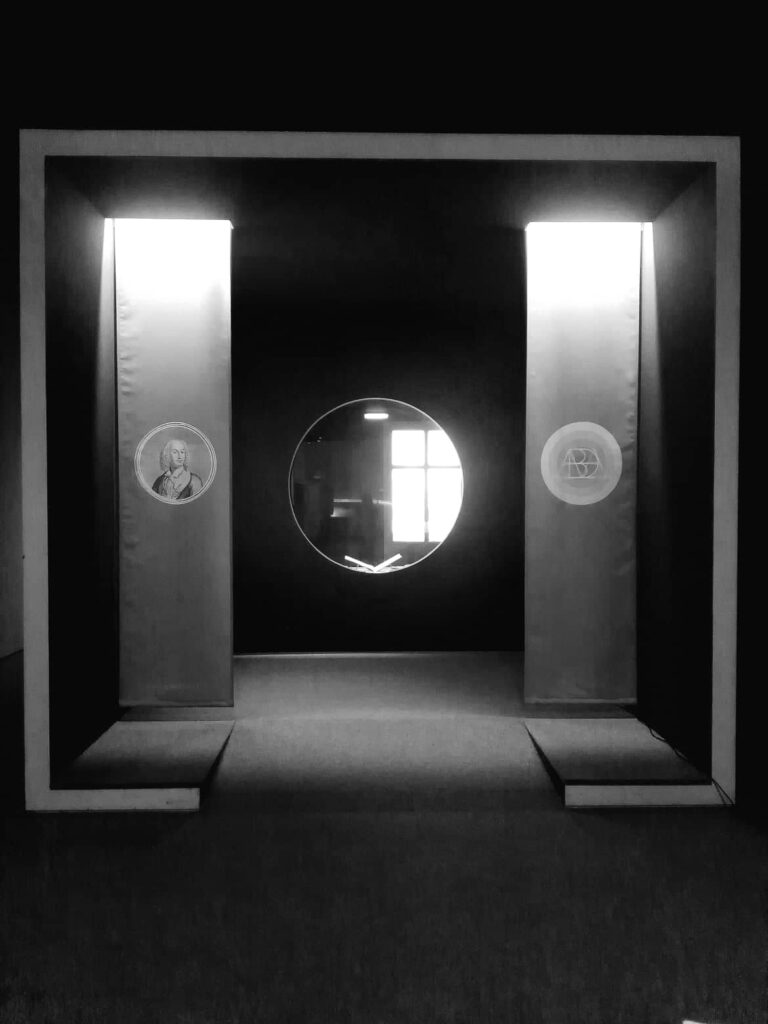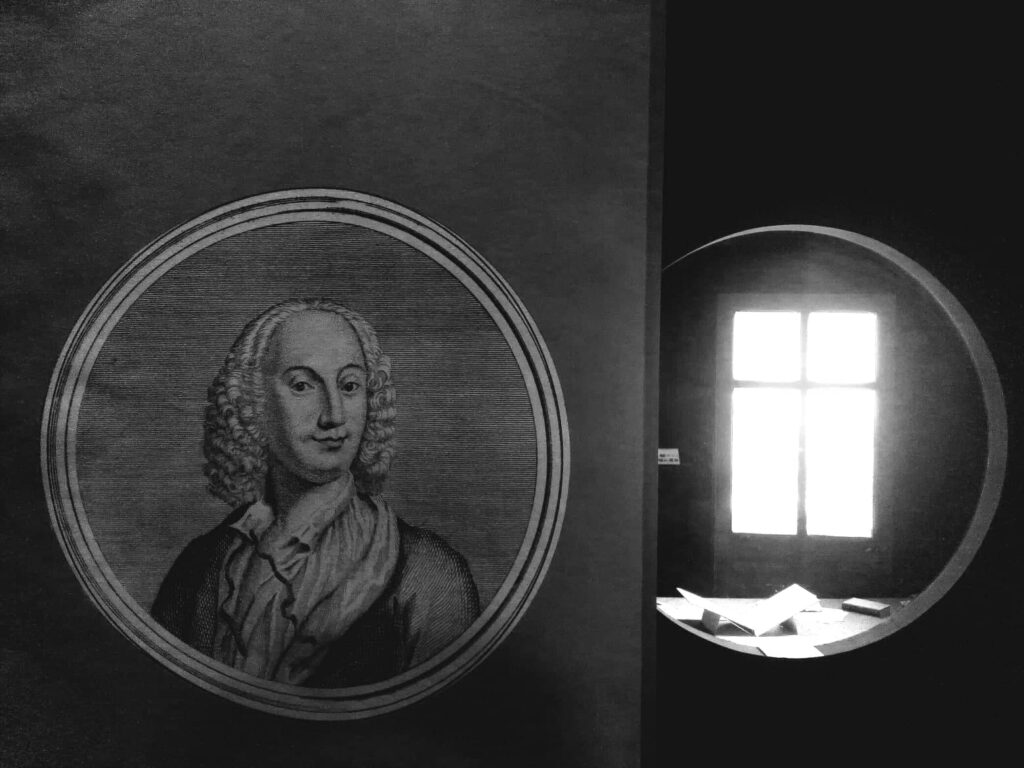The Vivaldi Auditorium, named after the renowned composer, underwent a complete renovation. Initially opened in 1976 within the University Library of Turin’s premises in the former Stables of Palazzo Carignano, the auditorium was designed to complement the library’s extensive collection with a spacious conference hall capable of accommodating over two hundred people. In its original state, the venue featured a minimalist design, with its only decorative elements being long aluminum candlesticks hanging from the ceiling. Initially used exclusively for library-related activities, the auditorium began to show signs of aging and technological obsolescence by 2013.
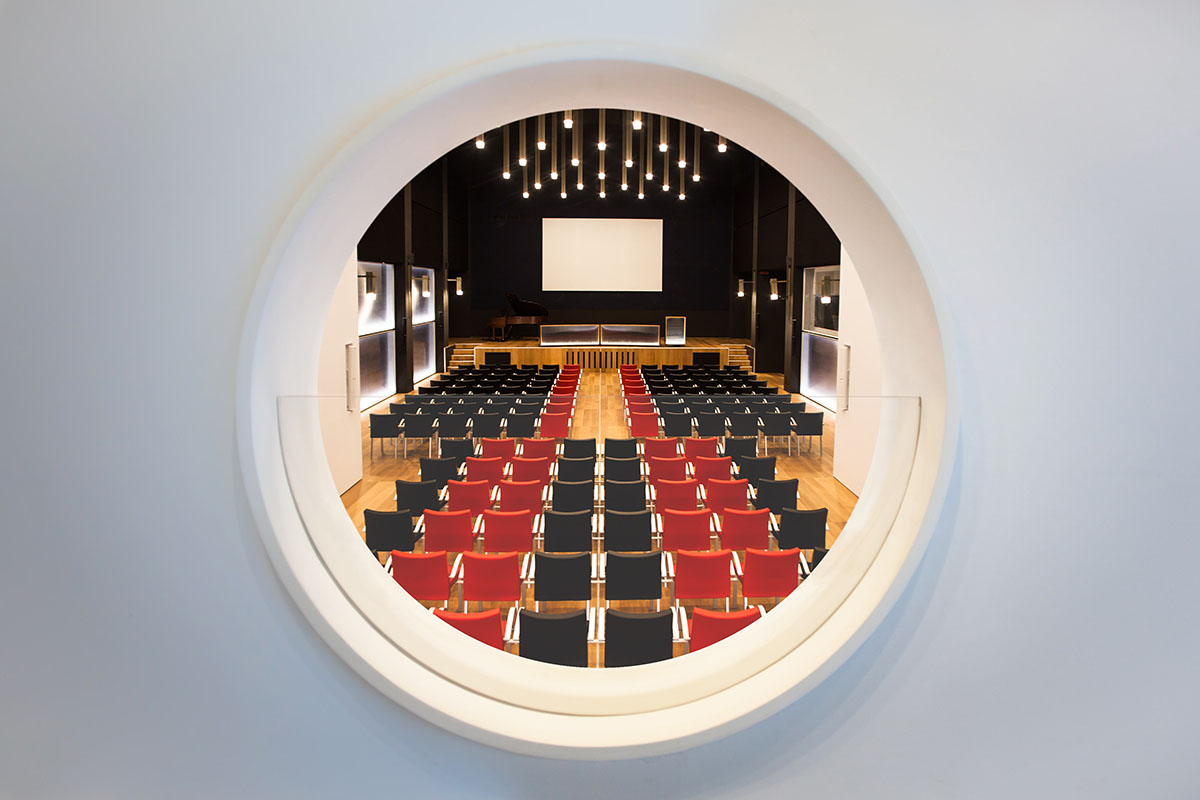
Director Andrea De Pasquale spearheaded a project to renovate the hall, aiming to unlock its full potential and expand its functions beyond library activities. Funding for the renovation was provided by Compagnia di San Paolo and the Ministry, with the implementation entrusted to the Association Amici della Biblioteca. The renovation, overseen by Diego Giachello of Officina delle Idee, resulted in a profound transformation of the hall’s architectural layout. Today, the auditorium stands as an independent structure with its own access, serving not only the library but also various city institutions due to its central location and renewed functionalities.
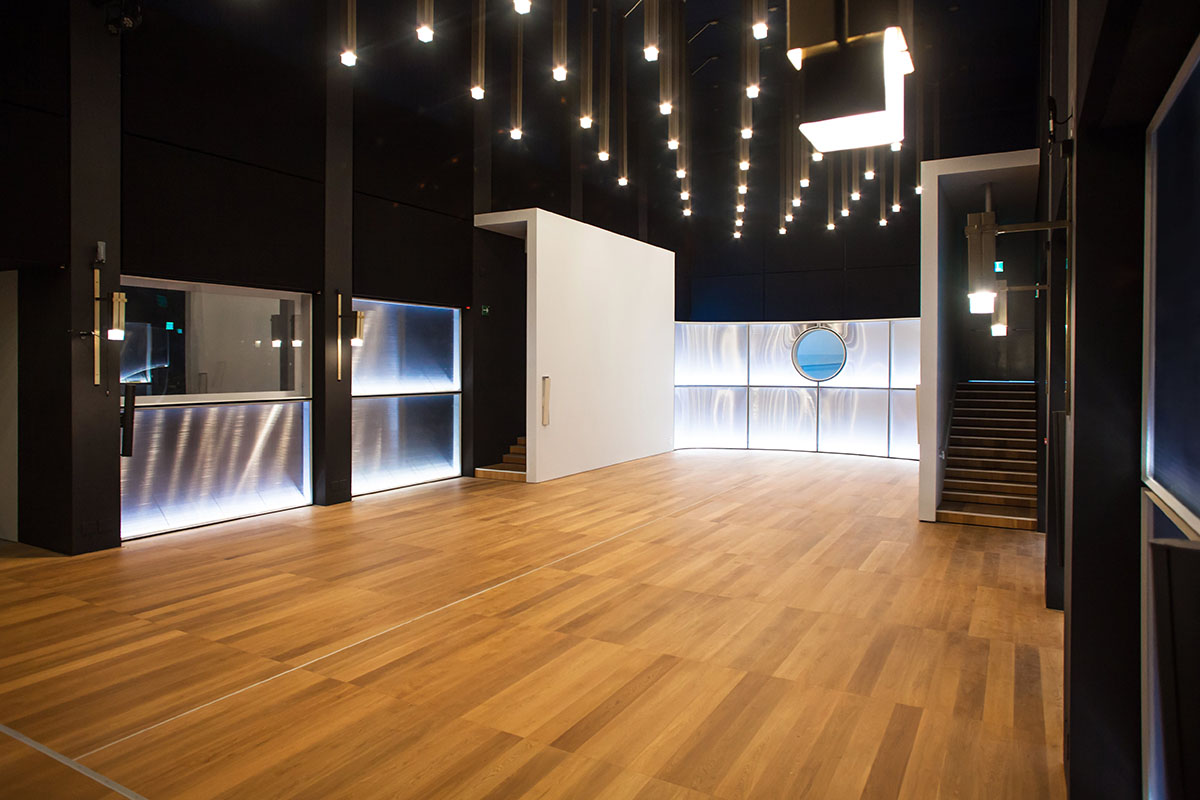 The renovation of the Vivaldi Auditorium focused on optimizing the flow of people entering from the square, ensuring clear paths and visibility of services such as ramps, reception, foyer, auditorium, stage, control room, and exits. The simple design was cost-effective and conducive to the renewal of audio and video technologies, electrical systems, and lighting.
The renovation of the Vivaldi Auditorium focused on optimizing the flow of people entering from the square, ensuring clear paths and visibility of services such as ramps, reception, foyer, auditorium, stage, control room, and exits. The simple design was cost-effective and conducive to the renewal of audio and video technologies, electrical systems, and lighting.
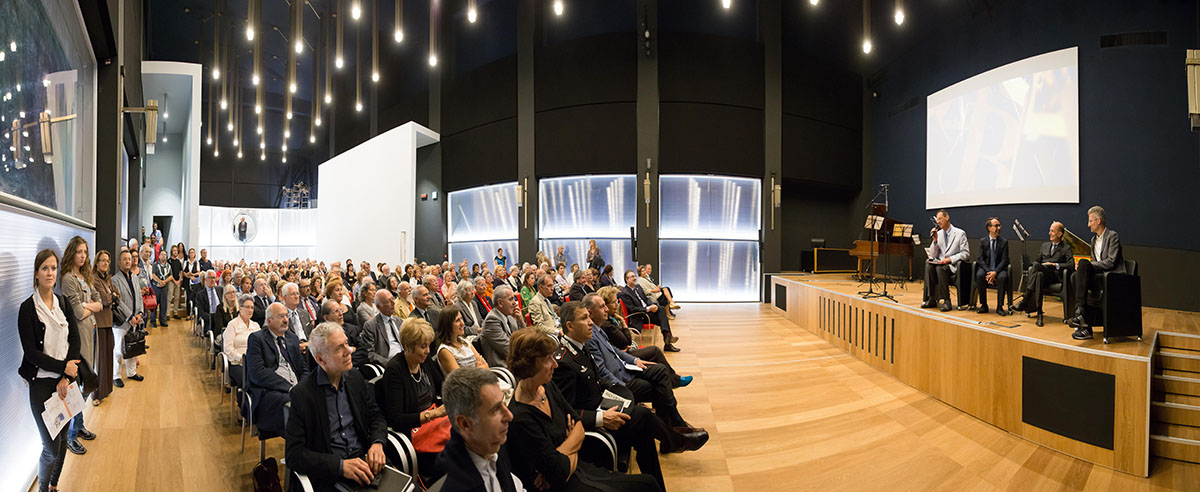 A long ramp, accessible to all visitors, including those with disabilities, provides direct access to the auditorium from the square, even outside the library’s operating hours. The ramp’s gradual slope, designed for wheelchair use, limits the hall’s capacity to 172 seats but offers a memorable experience for visitors transitioning from the historic cityscape to the auditorium’s interior.
A long ramp, accessible to all visitors, including those with disabilities, provides direct access to the auditorium from the square, even outside the library’s operating hours. The ramp’s gradual slope, designed for wheelchair use, limits the hall’s capacity to 172 seats but offers a memorable experience for visitors transitioning from the historic cityscape to the auditorium’s interior.
The stage area was expanded to 60 square meters to accommodate various activities, with a mobile table designed for conferences. A dedicated control room manages an advanced audio and video system, while the lighting system, including projectors and backlit panels, enhances performances. The ceiling, painted in a dark blue hue reminiscent of a starry sky, adds ambiance to the space, complemented by over a hundred LED lights for energy efficiency.
Acoustic corrections are provided by 300 square meters of curtains, complementing the warm natural oak-colored floor chosen for the auditorium. A grand piano, donated by a private benefactor, adds a touch of elegance to the stage, while artworks by Enrico Benetta adorn the space, featuring installations utilizing the Bodoni font. The reception table, also designed with expanded functions, accommodates visitors of all ages and abilities, with variable height for accessibility.
 Andrea De Pasquale, with the support of the General Directorate for Live Performance and the dedicated efforts of Franca Porticelli, adds another dimension to the ambitious project by establishing the Vivaldi House. This intimate yet impactful space is dedicated to the renowned musician Antonio Vivaldi. The Vivaldi House features a climate-controlled showcase where Vivaldi’s manuscripts will be displayed in rotation, creating an ideal environment for studying the composer and violinist. Visitors will have the opportunity to interact with original scores through a multimedia installation by the company Stelf, bringing Vivaldi’s music to life in a unique and immersive way.
Andrea De Pasquale, with the support of the General Directorate for Live Performance and the dedicated efforts of Franca Porticelli, adds another dimension to the ambitious project by establishing the Vivaldi House. This intimate yet impactful space is dedicated to the renowned musician Antonio Vivaldi. The Vivaldi House features a climate-controlled showcase where Vivaldi’s manuscripts will be displayed in rotation, creating an ideal environment for studying the composer and violinist. Visitors will have the opportunity to interact with original scores through a multimedia installation by the company Stelf, bringing Vivaldi’s music to life in a unique and immersive way.
The construction of the grand hall of the Vivaldi Auditorium was a monumental effort, spanning over three hundred days and involving over fifty technicians, craftsmen, and workers. Throughout the construction process, adjustments were made to accommodate new ideas and innovations. For example, the decision to make the seats movable reflects the original vision of creating a truly multifunctional space that can adapt to various needs, surpassing the limitations of a traditional conference hall with fixed seating.
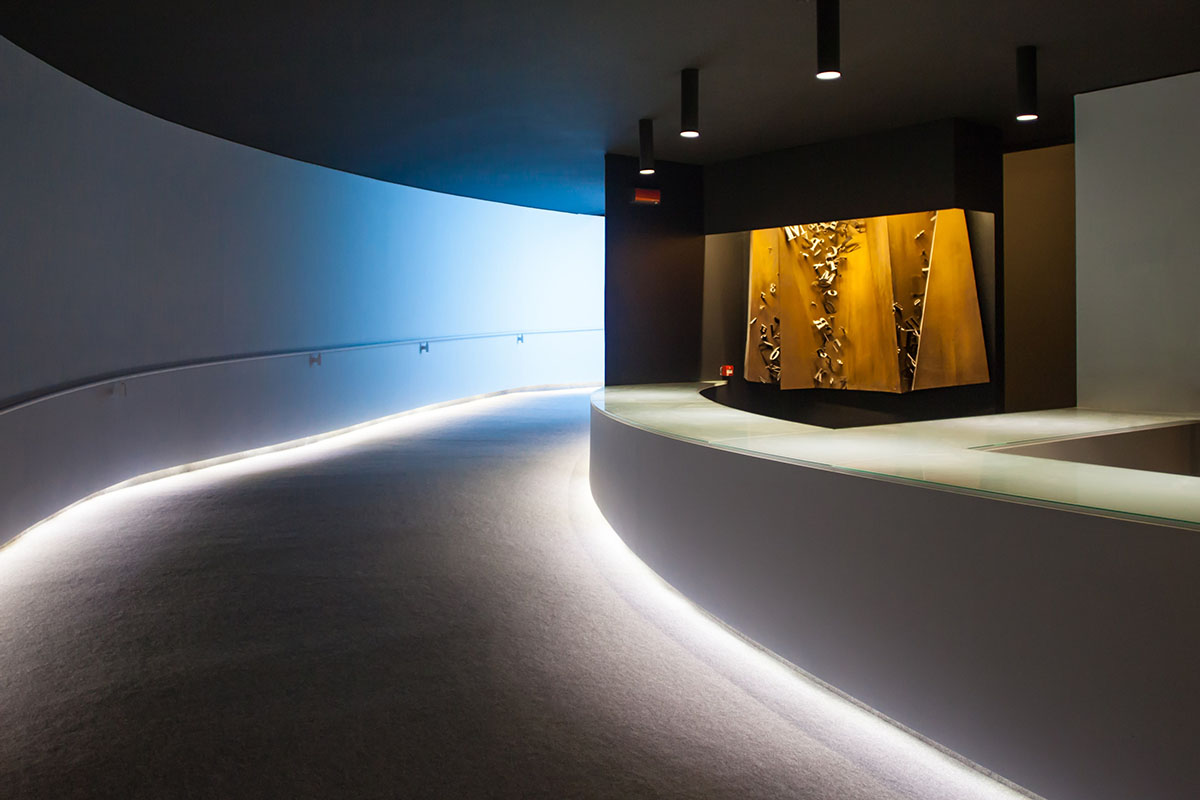
Adjacent to the new Auditorium, thanks to the support of the CRT Foundation, is a spacious area spanning over two hundred square meters. This climate-controlled space is equipped with showcases for displaying precious objects and books, as well as technical lighting, making it perfect for hosting exhibitions, events, and displays. Together, the Vivaldi Auditorium and the adjacent exhibition space offer an extraordinary venue for the city, given their central location and their versatility, providing a comprehensive cultural offering to the community.



